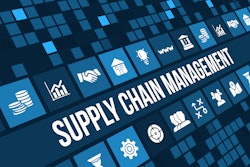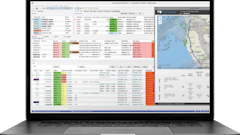
Hurricane season is a reminder of the fragility of modern supply chains, and by extension, our responsibility as supply chain practitioners to hedge risks in operations.
Across industries, businesses make strategic operational decisions to optimize efficiency and the bottom line: consolidating operations, centralizing distribution, or streamlining routes. On paper, these moves make sense. In practice, they can create points of vulnerability downstream that ripple into negative outcomes for all parties involved.
Let’s travel back one year, when Hurricane Helene tore through North Carolina and devastated a major IV fluid manufacturing plant, estimated to supply 60% of the nation’s IV fluids and peritoneal dialysis solutions, roughly 1.5 million bags daily, according to the American Hospital Association. This highlighted a single point of failure with consequences felt nationwide, underscoring why supply chain visibility is so critical.
Whether it’s a single plant in Puerto Rico, a key shipping route through the Suez Canal, or a sudden cyberattack on a supplier, disruptions are no longer rare events. Planning for them isn’t optional; it’s essential.
Supply chain visibility enables organizations to track, monitor and understand every stage of the network. By integrating real-time data across systems, companies can create a coherent view of their entire supply chain, so when disruptions occur, they can respond with speed, precision and confidence.
The 3 buckets of threats to supply chain
Supply chain professionals once worried mainly about delays and costs. Today, they must prepare for anything. Supply chain threats can be categorized into three main buckets – man-made, acts of God, and technology – each of which demands its own defense strategy.
· Man-made: Human-made chaos often strikes without warning. One day, tariffs threaten your imports and the next, they vanish as if they never existed to begin with. Then they return, this time targeting different products from different countries. Or, pirates seize cargo ships in the Red Sea. Wars erupt, closing vital trade routes. Dock workers strike during peak shipping season. Even well-intended policies can create unintended consequences. A federal bill designed to reshape the economy could, in turn, reshape how healthcare providers source medical supplies by changing Medicaid and SNAP funding.
· Acts of God: Usually accompanied with slightly more warning than man-made chaos, disruptions that fall in this bucket do not come with a predictable or truly projectable impact. Natural disasters grow fiercer and more frequent. Tsunamis wipe out Japanese auto parts factories. Wildfires consume California warehouses. Floods submerge Thai computer chip plants. That factory in North Carolina? They moved there to streamline operations, never imagining they’d placed manufacturing in a hurricane’s path given how far inland they plant was located. Climate change makes these “acts of God” both more common and more severe.
· Technology: This category is all-encompassing of digital threats. The threats that multiply as more parts of the supply chain become increasingly high-tech. Back in 2013, Target learned this lesson the hard way when hackers entered through their HVAC system—yes, the heating and cooling network—then jumped to payment systems and stole millions of credit card numbers. Every digital connection creates a new door for criminals. Smart warehouses, automated ordering systems, GPS-tracked shipments. Each innovation brings new vulnerabilities.
Can supply chains handle the triple threat? They must. But survival requires more than crossed fingers and good insurance, it requires visibility and resilience to ensure proactive measures are in place before disaster strikes.
Supply chain visibility is central to the disruption playbook. Here's 3 steps to achieve it
To achieve true end-to-end visibility and conquer the unknowns of disruption, there are three steps supply chains leaders can take.
First, start by mapping every vulnerability. Create a digital twin of your supply chain—a computer model that shows every supplier, route, warehouse, and connection. Run “what if” scenarios constantly. What happens if your main port closes? If your biggest supplier goes bankrupt? If hackers lock down your inventory system? Test these disasters in the digital world before they strike in reality.
Second, build redundancy everywhere possible. Single points of failure kill supply chains. If you source critical parts from one factory in one country, you’re betting your business on that location’s stability. Smart companies spread their bets across multiple suppliers, routes, and regions. Yes, it costs more. But not as much as shutting down production when your sole supplier fails.
Third, and perhaps most importantly, make disruption planning part of your daily operations, not an annual exercise. Markets shift too fast for yearly reviews. Your team needs clear playbooks for common disruptions and the flexibility to handle surprises. Train people to spot early warning signs—unusual weather patterns, political tensions, suspicious network activity. Quick response beats perfect planning when chaos strikes.
The old approach to supply chain management assumed a state of stability with occasional bumps. That world no longer exists. Today’s supply chains must flex and adapt constantly, and supply chain visibility means that mix up and disruptions can be alleviated before a domino effect occurs and manufacturers are ready for disruption from any direction.
Companies that embrace disruption and build visibility into their DNA will thrive. Those that don’t will become examples of cautionary tales about the price of wishful thinking in an uncertain world.

















